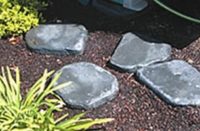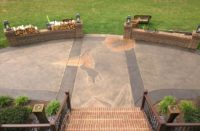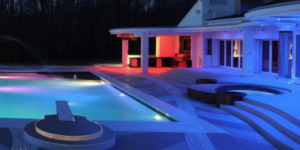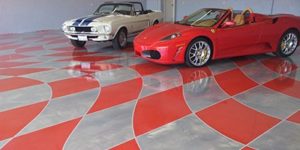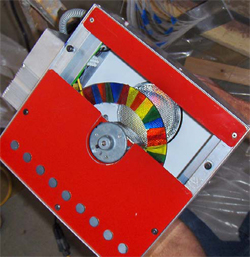 The illuminator is a sort of “magic box” that performs several functions in a fiber-optic concrete installation. First, it is the place where the light source illuminates the fibers. Second, it is the matrix that holds the fibers in place in the order required to create a desired effect. Third, it houses the equipment that controls the color, brightness and sequence of the lights.
The illuminator is a sort of “magic box” that performs several functions in a fiber-optic concrete installation. First, it is the place where the light source illuminates the fibers. Second, it is the matrix that holds the fibers in place in the order required to create a desired effect. Third, it houses the equipment that controls the color, brightness and sequence of the lights.
Three types of lights may be used in illuminators – metal halide (HID), halogen and LED. They vary in size, brightness (lumens), and wattage (energy consumed and heat generated).
Metal halide lights are the brightest. They are often used in landscaping, pools or spas. They can also be used at lower wattage for interior fiber optic installations. “A 70-watt MR 16 halogen bulb has approximately the same lumens as a 25-watt HID lamp,” explains Cyr Ryan of Fiber Optic Systems. “They are equally bright, but the halogen uses almost three times the energy and creates three times the heat.” Metal halide illuminators are larger than halogen or LED illuminators, up to 15 inches on a side depending on the complexity of the installation, so space can be an issue. On the other hand, they can hold and illuminate more fibers, potentially reducing the number of illuminators required for a large job.
Halogen bulbs are smaller and less expensive than metal halide. They put out a warm, incandescent light, according to Jeffrey Girard of The Concrete Countertop Institute. The drawback is they consume more energy and generate more heat, so they usually require a cooling fan, which takes additional space and creates unwelcome noise.
LEDs are relative newcomers to fiber optic illuminators. They tend to have the lowest lumens and so are the dimmest of the three, though brighter LEDs are being developed all the time. They are the most energy-efficient and smallest of the three types, often as small as a soda can or even a deck of cards. Some are battery operated.
The big advantage of LED illuminators is that they can be computer-directed to create special effects. “Take an LED illuminator for a bar top – once you have decided the amount of lumens you need, program in the colors and program in the sequence or set it for a random sequence.” says Jeff Kudrick. “You can also program the lights to change to music via DMX controls.”
Metal halide and halogen illuminators use a color wheel to vary colors or a sparkle wheel to change the brightness to create a twinkling effect. The effects are created mechanically, not programmed. Bundles of fibers are put through the holes in the illuminator panel in the order in which the designer wants those fiber ends illuminated with each color of the wheel. A cascade or chase effect is created by placing opaque panels at the right spots in the color wheel so the fibers light up or go dark in turn. More complex animated effects like fireworks or splashes can be created by placing each individual fiber in its own hole.
